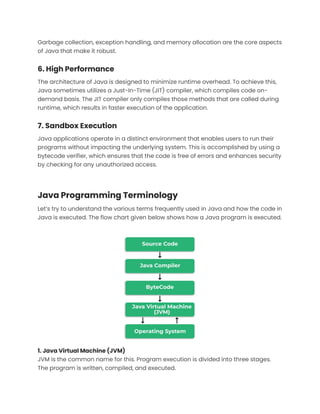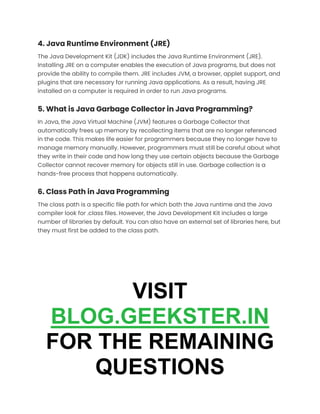Java is a widely used, high-level, object-oriented programming language created in 1995 by Sun Microsystems, known for its portability and reliability. Features of Java include object-oriented programming principles, platform independence, simplicity, safety, and robust performance, making it suitable for various applications across many devices. The development process involves writing code that is compiled into bytecode, which can be executed by the Java Virtual Machine (JVM), enabling cross-platform compatibility.





